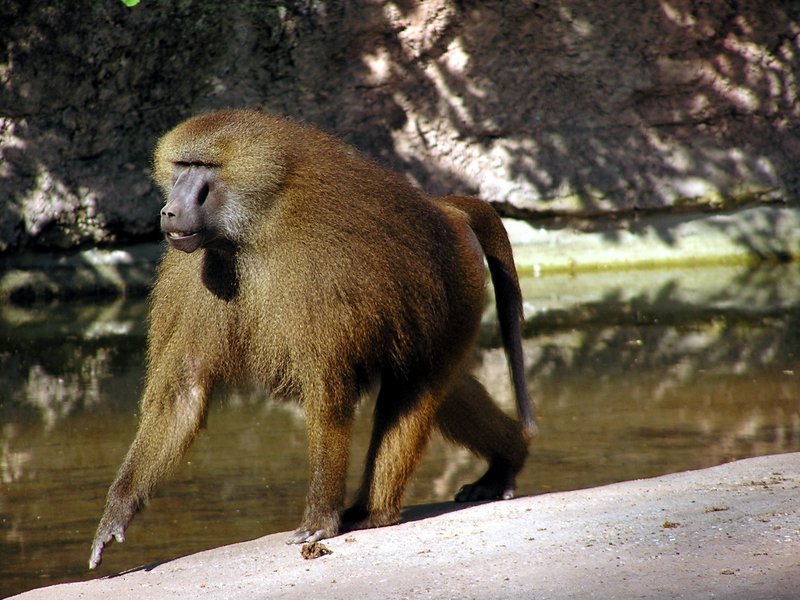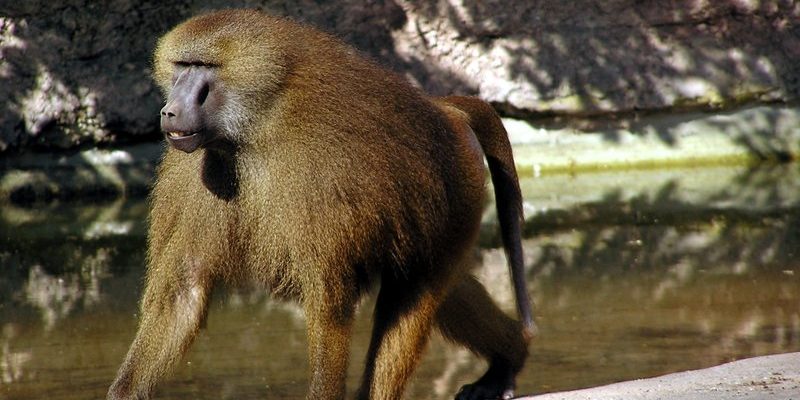
Let’s dig deeper into this topic. Understanding animal behavior can be fascinating, yet a bit daunting too. The Guinea baboon is a fascinating species, known for its social structures and lively interactions. However, just like any wildlife, they come with their own set of risks. So, can these adorable creatures really be dangerous? Let’s explore.
Understanding Guinea Baboons
Guinea baboons, or Papio papio, are native to West Africa. They thrive in various habitats, from savannahs to forests. These baboons are medium-sized and known for their distinctive colors: a mix of brown and yellow, with a unique face that makes them easily recognizable. Their social dynamics are quite intriguing; they live in troops that can range from just a few to over a hundred individuals.
One striking feature of these baboons is their hierarchy. Strong males typically dominate, while females can be equally fierce in protecting their young. Imagine a bustling city with a complex social order. That’s how Guinea baboons navigate their lives in the wild, each playing a specific role within the group.
They are primarily omnivores, munching on fruits, seeds, and sometimes insects. This makes them adaptable and resourceful. However, this adaptability can bring them closer to human populations, which is where some dangers may arise.
Are Guinea Baboons Aggressive?
Now, you might be wondering about their behavior. Generally, Guinea baboons are not known for being overtly aggressive. They prefer to avoid confrontation. However, as with any wild animal, aggression can surface, especially if they feel threatened or cornered.
Consider this: if you approached a squirrel too quickly while it was eating, you’d likely see it scurry away. But if it felt in danger, it might lash out. Similarly, Guinea baboons can exhibit aggressive behavior if they perceive a threat to their troop or their young.
Another factor to consider is their territorial nature. They can become aggressive if they feel their space is being invaded, especially by humans. It’s like standing too close to someone in a crowded café—you might be met with a glare! This territorial instinct is a core part of their survival strategy.
What Triggers Aggression in Guinea Baboons?
A few scenarios can lead to a Guinea baboon reacting aggressively. Here are the most common triggers:
- Defending Territory: They are protective of their habitat. If humans or other animals encroach, they will defend their space.
- Protecting Young: Like any parent, a mother baboon is fiercely protective of her young. If she perceives any threat, that can lead to aggression.
- Food Competition: Baboons can become aggressive over food sources, especially if they’re in a situation where resources are scarce.
So, it’s essential to respect their space and avoid actions that might provoke them. Just like you wouldn’t want to disturb a nest of wasps, keeping a safe distance from Guinea baboons is best for everyone involved.
Human Encounters with Guinea Baboons
When humans cross paths with Guinea baboons, the encounters can vary widely. In some cases, they might simply ignore people and go about their business. In others, however, things can take a turn.
Picture a family on a safari trip in West Africa. They spot a troop of Guinea baboons. Initially, the baboons might seem curious but harmless. However, if the family gets too close or inadvertently shows food, they could trigger an aggressive response. This is why it’s crucial to understand how to act around these animals.
Usually, keeping a safe distance is key. If you’re in an area known for these baboons, don’t feed them or try to get their attention. It’s not just for your safety; it’s also better for the baboons. Feeding them can lead to dependency on human food, which isn’t healthy for them.
How to Stay Safe Around Guinea Baboons
Staying safe in Guinea baboon territory means being aware and prepared. Here are some practical tips:
- Keep Your Distance: Observing from afar is not only safer, but it also allows you to enjoy their natural behavior without interference.
- Avoid Feeding: Never feed baboons. This can lead to aggressive begging and a reliance on human food.
- Stay Calm: If a baboon approaches you, stay calm. Sudden movements can trigger an aggressive response.
- Secure Food: If you’re in areas where baboons roam, keep your food stored properly and out of sight.
Following these guidelines can help ensure a peaceful coexistence with these fascinating creatures.
Comparing Guinea Baboons to Other Primate Species
You might find yourself wondering how Guinea baboons stack up against other primates, like chimpanzees or macaques. While all primates have their quirks and behaviors, there are some distinct differences.
For instance, chimpanzees are known for their intelligence and problem-solving skills, often leading to more complex social structures. However, chimpanzees tend to be more aggressive than Guinea baboons. On the other hand, macaques can sometimes display similar behaviors but are generally found in more urban environments, increasing their interactions with humans.
Understanding these differences helps highlight why learning about Guinea baboons is so essential. Their behavioral nuances underline how the environment and social dynamics influence aggression and interactions with humans.
Final Thoughts on Guinea Baboon Safety
As we wrap up our journey into the world of the Guinea baboon, it’s clear that these animals, while fascinating and generally non-aggressive, can pose dangers under certain circumstances. Your approach and understanding of their behaviors can create a safer environment for both you and the baboons.
Remember, respecting wildlife and their habitats is crucial. By staying aware and informed, you can enjoy observing these incredible creatures without putting yourself at risk. Just like navigating a busy street, a little caution can go a long way in ensuring everyone’s safety. So, next time you hear about Guinea baboons, you can share what you know with confidence!

